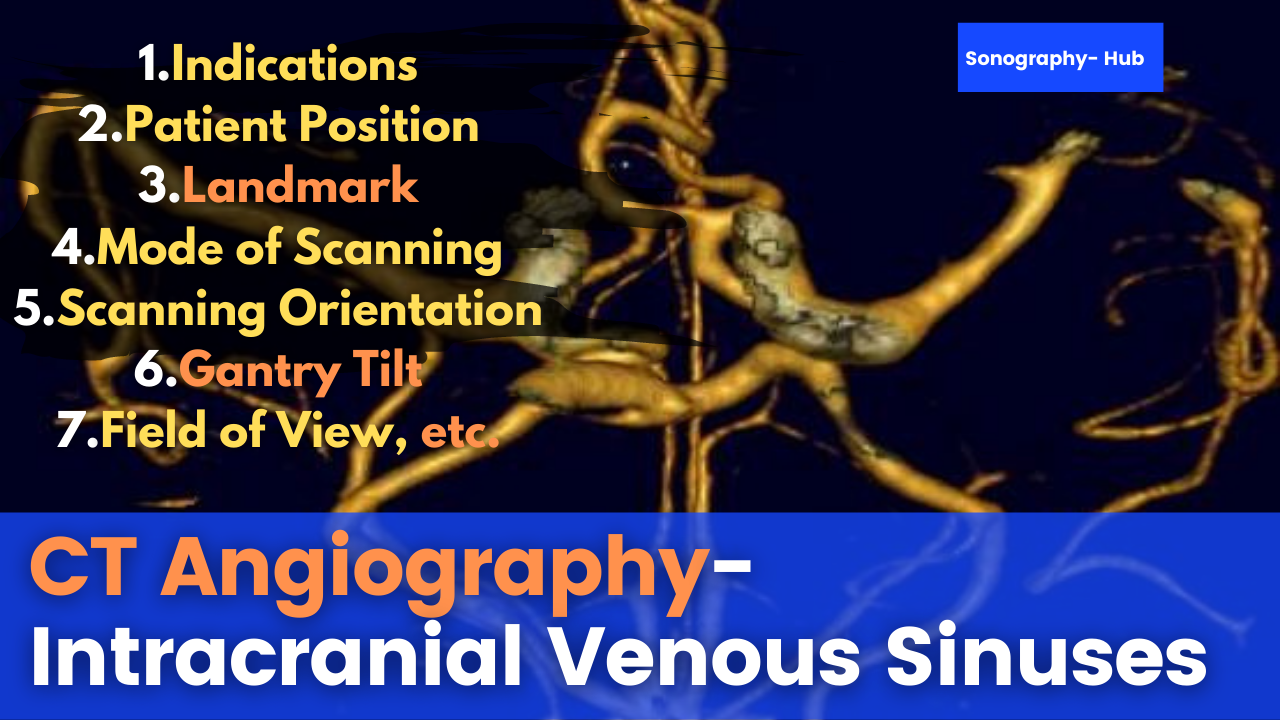Indications
- Suspected thrombosis of the venous sinuses or the intracerebral veins
- Suspected venous anomalies
e.g. Vein of Galen malformation
Patient Positioning
Supine with Headfirst, with Arms beside the trunk.
Supine with Headfirst, with Arms beside the trunk.
Topogram Position/Landmark
Lateral; 2-3 cm above the vertex.
Lateral; 2-3 cm above the vertex.
Mode of Scanning
Helical.
Helical.
Scan Orientation
Caudocranial
Caudocranial
- Starting Location-Level of the occipital squame.
- End Location-To the level of the vertex.
Gantry Tilt
As many degrees are required to make the plane of scanning parallel to the canthometal line.
As many degrees are required to make the plane of scanning parallel to the canthometal line.
Field of View
Just fitting the skull including the soft tissue.
Just fitting the skull including the soft tissue.
Contrast Administration
Intravenous.
Intravenous.
Volume of Contrast
80-100 mL.
80-100 mL.
Rate of Injection of Contrast
3-4 mL/sec.
3-4 mL/sec.
Scan Delay
80-100 sec.
80-100 sec.
Slice Thickness in Reconstruction
1.0-1.5 mm.
1.0-1.5 mm.
Slice Interval in Reconstruction
0.5-0.75 mm.
0.5-0.75 mm.
Reconstruction Algorithm/Kernel
Smooth.
Smooth.
3D-Reconstructions
- MPR
- MIP
- VRT
- SSD
Comments
- The use of a headrest is recommended for head positioning.
- This protocol cannot be used for the evaluation of the cavernous sinuses or the small cortical veins.
- A non-contrast scan in sequential mode should precede the angiography protocol as it will give the baseline scans, will determine the region of interest, and also are useful for subtraction images.
- There should be no motion between the noncontrast and contrast scans besides using the same technical parameters if subtraction images are desired.
Criteria of good image quality
Symmetric position with the orbital plates overlapping with each other.
Absence of the motion artefacts.
Absence of beam hardening.
Optimal opacification of the venous sinuses.
No or little opacification of the arteries.


Post a Comment